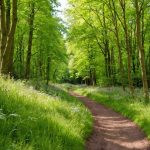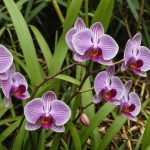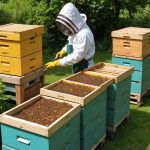The Importance of Local Orchid Species in Ecosystems
Local orchid species provide profound ecological contributions, often underestimated. Their role in biodiversity and ecosystem health is crucial. These plants support habitat complexity and offer critical resources for various species, including pollinators. By sustaining local orchid populations, we assist these pollinators, which play a pivotal role in fertilising other plant species and maintaining floral diversity.
The ecological importance of orchids extends beyond their immediate environment. Orchids contribute to soil fertility and water regulation, indirectly influencing the broader ecosystem. As unique components of the natural landscape, they serve as bioindicators, reflecting the state of their habitats. Conserving these species helps detect and mitigate changes due to human activity or climatic variations.
Dans le meme genre : Boosting Biodiversity: Innovative Hedgerow Management Strategies for UK Farmers
Moreover, orchids have a deep connection with cultural heritage, especially in regions like the UK. Their aesthetic allure and symbolic significance weave into local traditions and stories, underscoring the need for conservation efforts. By protecting local orchid species, we preserve not only ecological balance but also the cultural tapestry of our communities. Understanding these benefits, we are encouraged to advocate for local orchid conservation actively.
Challenges Facing Local Orchid Species
Local orchid species encounter a multitude of challenges due to habitat destruction, climate change, and the presence of invasive species. The impact of habitat loss is profound; orchids often grow in very specific environments, and the destruction of forests and wetlands can wipe out entire populations. This fragility makes them highly susceptible to the effects of urban expansion, agriculture, and logging activities.
A voir aussi : Building Bridges for Nature: Strategies for UK Communities to Establish Wildlife Corridors Linking Isolated Habitats
Climate change adds another layer of difficulty, affecting orchids’ ability to thrive. Changes in temperature and precipitation patterns can alter the delicate balance of their ecosystems. Some species may find their usual habitats becoming unsuitable, leading to shifts in distribution. This often results in a decline in orchid populations as they struggle to adapt to rapidly changing conditions.
Invasive species contribute significantly to the threats against native orchids. These non-native plants can outcompete orchids for resources such as light, space, and nutrients, severely impacting their survival chances. Invasive species often spread rapidly, further reducing natural habitats and endangering resident orchid species. The combination of these factors demands urgent attention to protect the remaining orchid populations.
Community Engagement in Orchid Preservation
Community involvement plays a crucial role in effective orchid preservation. Local conservation efforts often include community-led projects which have demonstrated remarkable success. For example, in Southeast Asia, communities have developed initiatives to protect native orchids by establishing orchid gardens and nurseries. These projects not only preserve wild orchids but also educate the public on their ecological importance, fostering a culture of conservation awareness.
Local gardening clubs can significantly contribute to these preservation efforts. By partnering with conservation organizations, clubs can engage their members in activities such as habitat restoration and species monitoring. Such collaborations allow gardeners to utilize their skills in nurturing and propagating endangered orchid species. Moreover, they provide a platform for knowledge exchange, raising awareness within local communities.
Volunteer opportunities abound for those eager to get involved. Many conservation organizations offer programs where volunteers can engage in orchid preservation efforts. These may involve activities such as assisting in botanical gardens, participating in orchid surveys, or helping with educational outreach. Engaging in these opportunities not only aids conservation but also enriches the volunteer’s understanding of local ecosystems and biodiversity.
Practical Tips for Supporting Local Orchids
When considering Gardening for Orchids, opting for native orchid species in home gardens is crucial. These orchids are naturally adapted to the climate and conditions of the area, making them easier to care for and more likely to thrive. You can research your region’s native orchid species to start your gardening journey.
Embracing Sustainable Practices not only supports the environment but also ensures that your local orchids flourish. This involves using organic fertilizers, responsible water management through rainwater harvesting, and avoiding chemical pesticides that can harm orchids. By practicing sustainability, you’re contributing to the broader ecosystem’s health.
Creating habitats conducive to orchid growth is essential. Focus on replicating their natural environment. This includes providing adequate shade, maintaining suitable humidity levels, and offering well-aerated soil. Orchids thrive in specific conditions, and attention to these details makes a significant difference.
Native Plant Gardening helps integrate orchids seamlessly into your landscape. By planting them alongside other native plants, you’re fostering an ecosystem that supports diverse wildlife. This approach not only beautifies your garden but also promotes biodiversity, ensuring a healthy environment for your orchids to prosper.
Educational Resources and Programs
Engaging in educational initiatives is crucial for those passionate about orchid conservation. These programs often include interactive workshops, where participants can delve into conservation techniques. Experts guide attendees on propagating and protecting these delicate plants, ensuring a comprehensive understanding of their unique ecosystems.
For those unable to attend in person, numerous recommended reading materials are available. Books and publications by leading botanists offer insights into habitat preservation and best practices for cultivation. Online resources further expand this knowledge pool, with databases and articles providing up-to-date information.
Local conservation resources frequently collaborate with schools to foster a love for nature in younger generations. These partnerships create dynamic educational programs, often involving hands-on activities. Students gain valuable lessons on biodiversity and the importance of maintaining ecological balance. This collaborative approach not only informs but inspires the next generation to continue conservation efforts.
Participating in these educational opportunities is instrumental in building a community dedicated to orchid preservation. By embracing both traditional and digital platforms, these programs ensure accessibility, encouraging broader participation and engagement.
Success Stories from the UK
In the realm of orchid conservation, several inspiring initiatives across the UK have made significant strides. These case studies serve as a testament to the dedicated efforts of communities and organisations working tirelessly to protect these delicate plants. One such project is the restoration effort in Northumberland, where community leaders collaborated with local councils to revitalise the beleaguered orchid populations. Through habitat restoration and public engagement, this initiative has seen a remarkable resurgence of native species.
Leaders like Jane Smith, who spearheaded the Northumberland project, have shared insights in interviews about their strategies and commitment to the cause. Their focus on fostering community involvement set a precedent for other regions aiming to replicate such success. These efforts are driving a broader positive impact, with local orchids benefitting from increased protective measures.
Quantifiable success comes in the form of metrics illustrating improved orchid health and diversity. For instance, surveys conducted post-restoration have shown up to a 40% increase in orchid numbers in rewilded areas. Such concrete data underscore the potential of strategic, community-driven conservation, encouraging further endeavours to preserve the unique and breathtaking beauty of Britain’s orchids.










